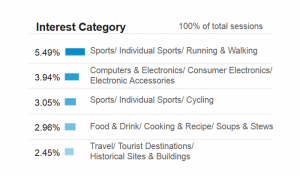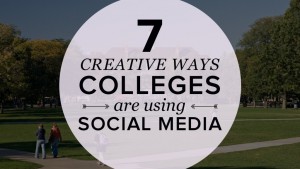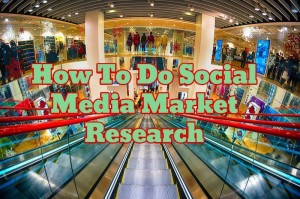When it comes to marketing and leveraging the influence of social media, businesses are often inhibited by preconceptions and narrow thinking. One example is the notion that social media marketing is the sole preserve of B2C sectors, for example, which often deters inexperienced firms in B2B markets from embracing this unique and accessible channel.
In fact, social media marketing is something that can also serve as an impactful tool for businesses across a range of B2B sectors. This is particularly true in the manufacturing industry, where an estimated 85% of marketers cited content and social marketing drives as key drivers of sales in 2015.
Social platforms including LinkedIn and YouTube were also referenced as increasingly influential resources, particularly in relation to the effective sharing and distribution of content.
3 Ways in Which Manufacturers and Product Managers Can Harness Social Media
This is an encouraging trend, and one which suggests that the manufacturers and product managers that have leveraged social media have achieved positive and measurable results. This is something that less knowledgeable or experienced brands within the manufacturing sector can learn from, as they harness the reach and influence of social channels to drive sales and brand awareness.
With this in mind, here are three effective ways in which you can successfully leverage social media for the good of your brand: –
Make Facebook and LinkedIn the Focal Points of your Social Marketing Strategy
While all businesses should look to develop an integrated and tailored social profile (in order to effectively target customer segments), this is particularly important in the manufacturing sector. Whether you produce your own products and sell directly to consumers or are hoping to engage B2B clients, you will need to choose a viable range of channels that provides a showcase for your ranges and markets them appropriately.
In terms of core elements, you need to integrate Facebook and LinkedIn at the heart of your social marketing strategy. Facebook offers you instant access to a user base in excess of one billion, so creating a company profile and using this to highlight products and innovations provides tremendous reach. This can be also be used to integrate alternative marketing tactics, primarily by sharing blog posts, details of product launches and any innovative promotional campaigns aimed at optimising sales conversions.
While Facebook offers you access to a huge, global audience, however, you will need to ensure that you deliver the most relevant and appealing content to engage individuals. This requires a core understanding of your client and consumer base and the reasons that they use the platform, with an estimated 49% of individuals claiming that they ‘like’ a Facebook page in order to support a particular brand.
For B2B manufacturers, LinkedIn is another powerful and effective platform. This site is far more stream-lined and professional in its nature than Facebook, which in turn offers access to potential partners and an entry point into long-term, client relationships. By registering a company page here, you can leverage LinkedIn’s blogging facility to share informative and insightful content that establishes your service as a thought leader.
This will improve your chances of forging mutually beneficial contacts and securing lucrative B2B orders in the future.
Embrace Video and Broadcast on YouTube
Of course, rich media plays a central role in any successful social and content marketing campaign, as diverse publications are far more likely to engage customers and clients alike. When targeting B2B clients, however, it is also important to note that video is far more impactful than still imagery and capable of driving 62% more engagement on average.
So while your B2B manufacturing outlet can still use imagery to drive social conversations (particularly when targeting female-orientated clients or markets through Pinterest), you should undoubtedly focus the majority of your attention on video marketing.
One of the best ways for manufacturers to capitalise on this trend is to broadcast on YouTube, as this platform currently boasts over one billion unique users and enables brands to establish their own, independent channels. This can then be used to share varied by impactful content, from product training videos and behind-the-scenes the scenes footage of the manufacturing process. This offers value and information to B2B clients, while helping to humanise your operation and cultivate a deeper relationship.
Both B2B and B2C manufacturers can also leverage video to share brand and product narratives, while also capturing compelling testimonials from former customers and clients.
Platforms such as YouTube are also powerful as they allow you to host content directly on the website and embed it on your own website, enhancing your own landing page loading times and the quality of the videos in question.
Empower Followers, Customers and Clients as Social Contributors
One of the biggest concerns that manufacturers about social media marketing is their ability to consistently produce engaging content. While this can be a particularly significant challenge for B2B brands, however, the conversational and interactive nature of social media actively enables manufacturers to empower their follows as key contributors of insight and content.
One of the best examples of this was in evidence recently, as food manufacturing brand Hampton Creek connected with followers through Twitter and encouraged them to share tricks for recycling and reusing empty jars. This is a direct and fun way of engaging followers, while subtly advertising products, sustainable manufacturing techniques and an overarching brand.
Twitter is central to this process, whether you are interacting with followers, gathering real-time insight or attempting to drive efficient, after-sales service. In fact, Twitter helped brands to re-imagine the nature of customer services, which went from being a costly and unyielding business element to a key marketing channel and ‘a scalable way’ to delight consumers.
Regardless of how you engage your customer or client base through social media and the Twitter platform, however, the key is to create real-time interaction and an organic channel through which to market your products. This will help to both generate fresh and exciting content for your social profile and optimise the ROI on your total marketing spend.
Business & Finance Articles on Business 2 Community(89)





